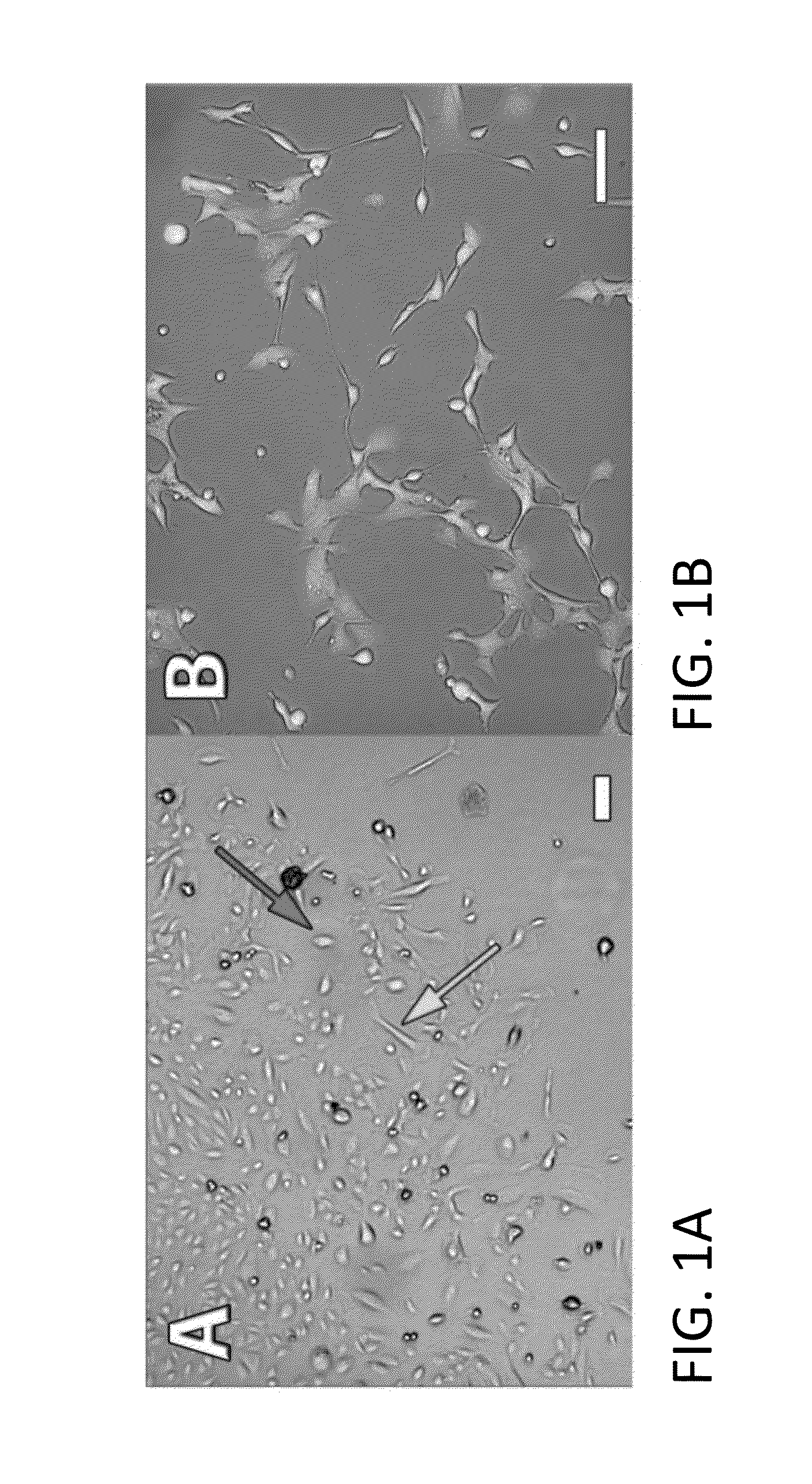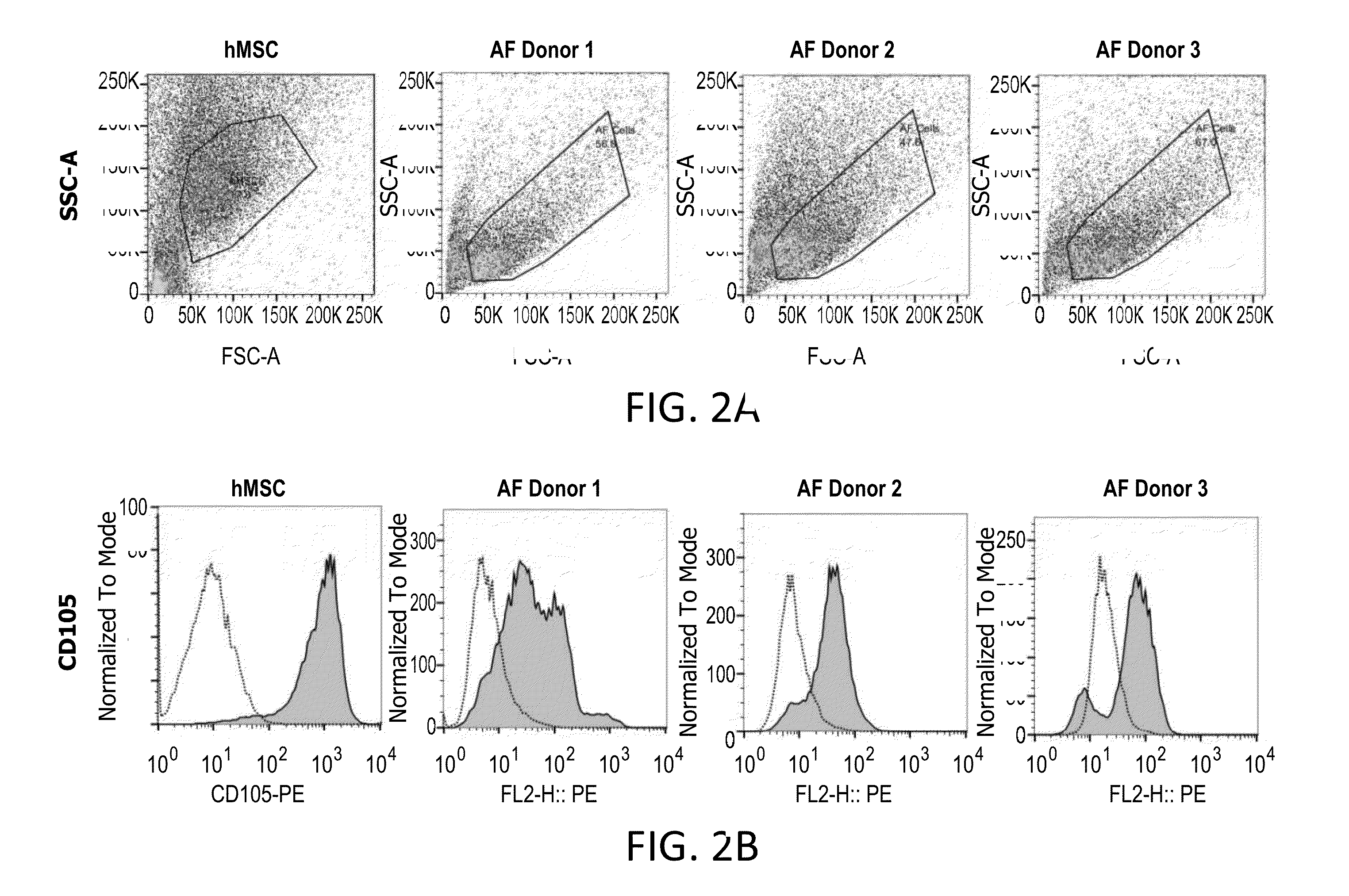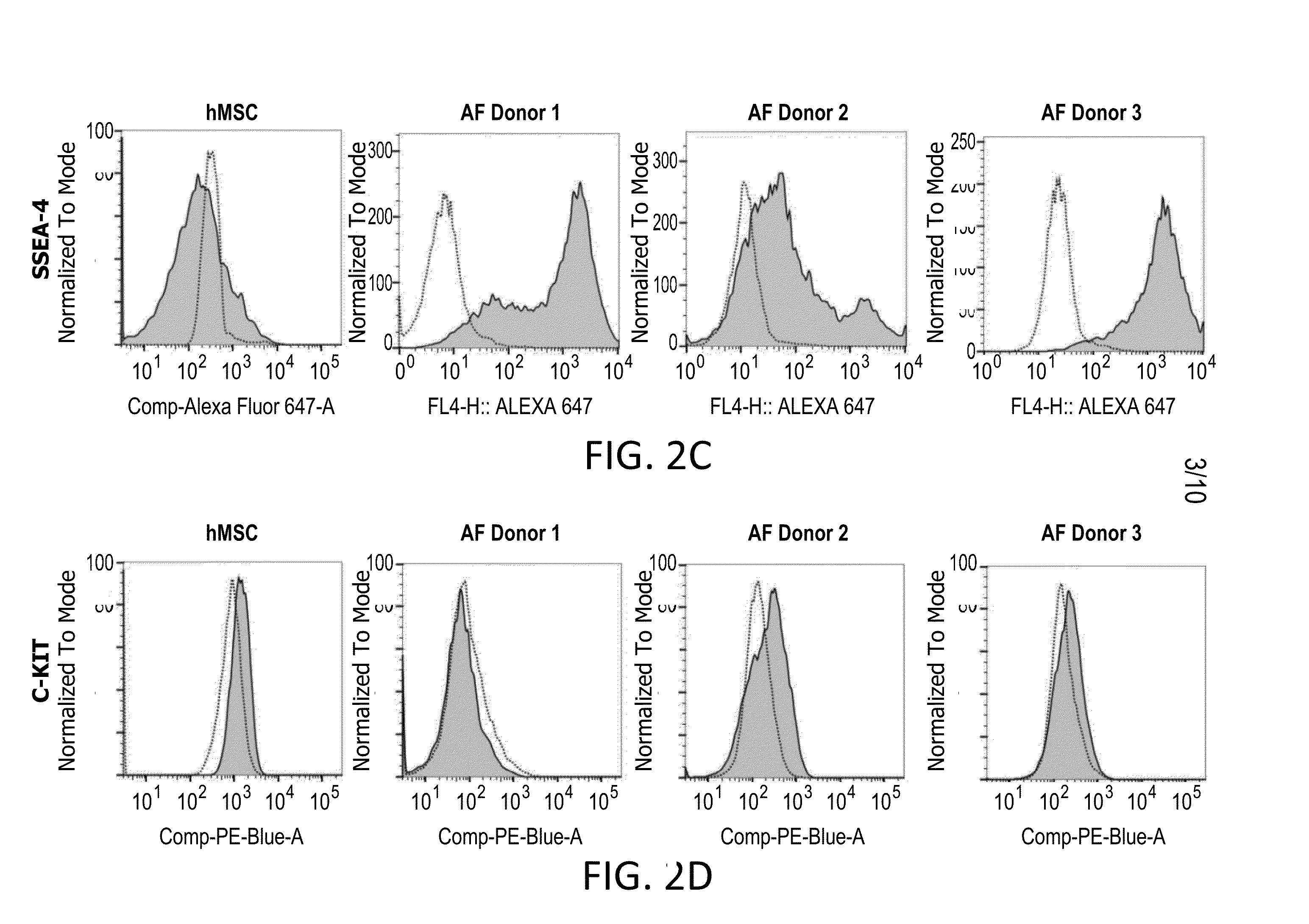Multipotent Prenatal Stem Cells
a multi-potent, stem cell technology, applied in the field of stem cell isolation, propagation and use of prenatal stem cells, can solve the problems of unavoidable variability in both quality and efficacy of msc, limited differentiation capability of adult derived mscs, and the inability to recognize both stem cell types as an immediate alternativ
- Summary
- Abstract
- Description
- Claims
- Application Information
AI Technical Summary
Benefits of technology
Problems solved by technology
Method used
Image
Examples
example
[0052]The following example is presented to provide those of ordinary skill in the art with a complete disclosure and a description of how the compounds, compositions, and methods described and claimed herein are made and evaluated. The following examples are intended to be purely exemplary and are not intended to limit the scope of what the inventors regard as their invention. There are numerous variations and combinations of conditions, e.g., component concentrations, desired solvents, solvent mixtures, temperatures, pressures and other reaction ranges and conditions that can be used to optimize the product from the described process. Only reasonable and routine experimentation will be required to optimize such process conditions. As will be understood by those familiar with the art, the present invention may be embodied in other specific forms without departing from the spirit or essential characteristics thereof.
Initial Culture and Morphological Observation
[0053]Amniotic fluid f...
PUM
 Login to View More
Login to View More Abstract
Description
Claims
Application Information
 Login to View More
Login to View More - R&D
- Intellectual Property
- Life Sciences
- Materials
- Tech Scout
- Unparalleled Data Quality
- Higher Quality Content
- 60% Fewer Hallucinations
Browse by: Latest US Patents, China's latest patents, Technical Efficacy Thesaurus, Application Domain, Technology Topic, Popular Technical Reports.
© 2025 PatSnap. All rights reserved.Legal|Privacy policy|Modern Slavery Act Transparency Statement|Sitemap|About US| Contact US: help@patsnap.com



